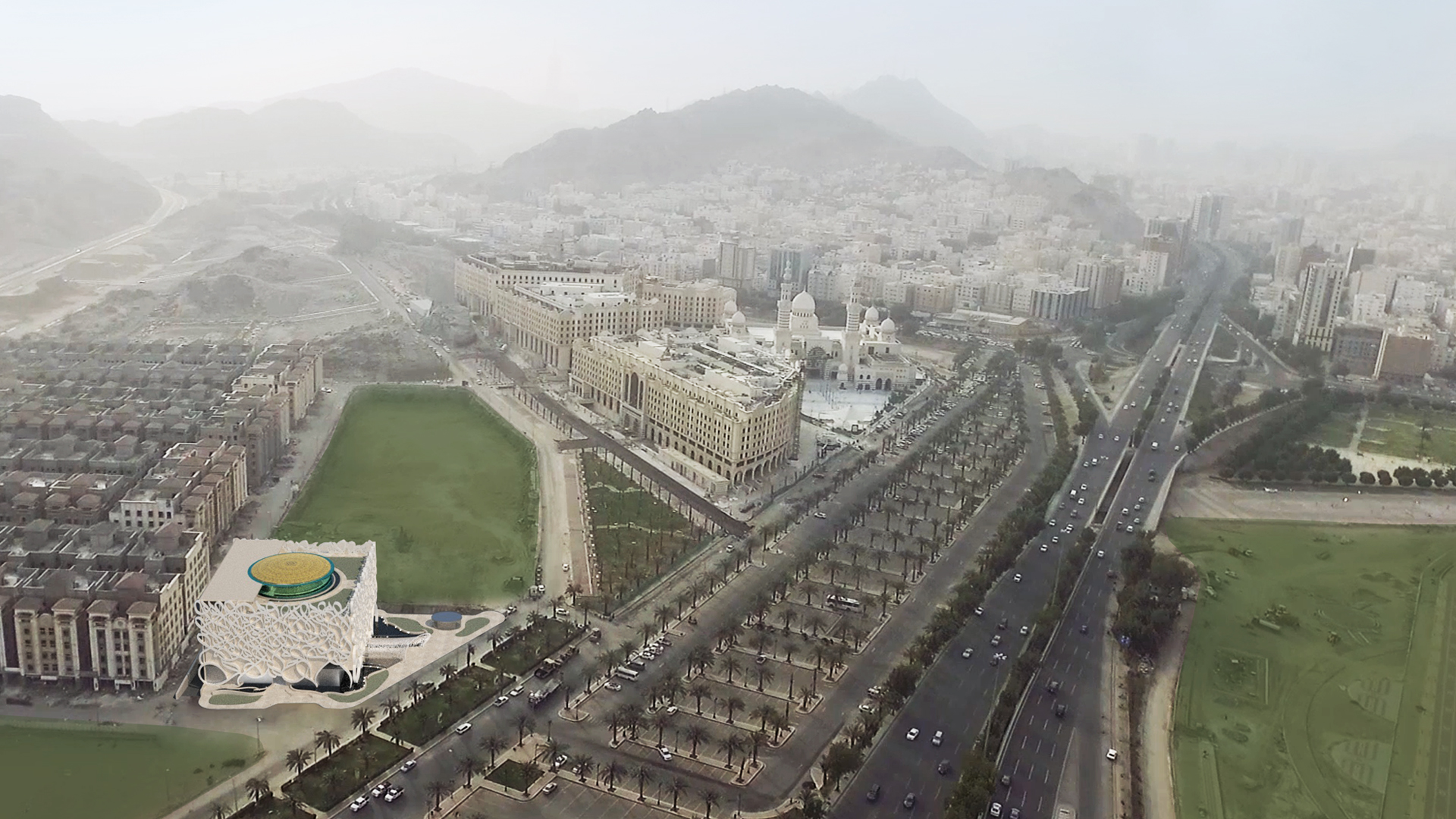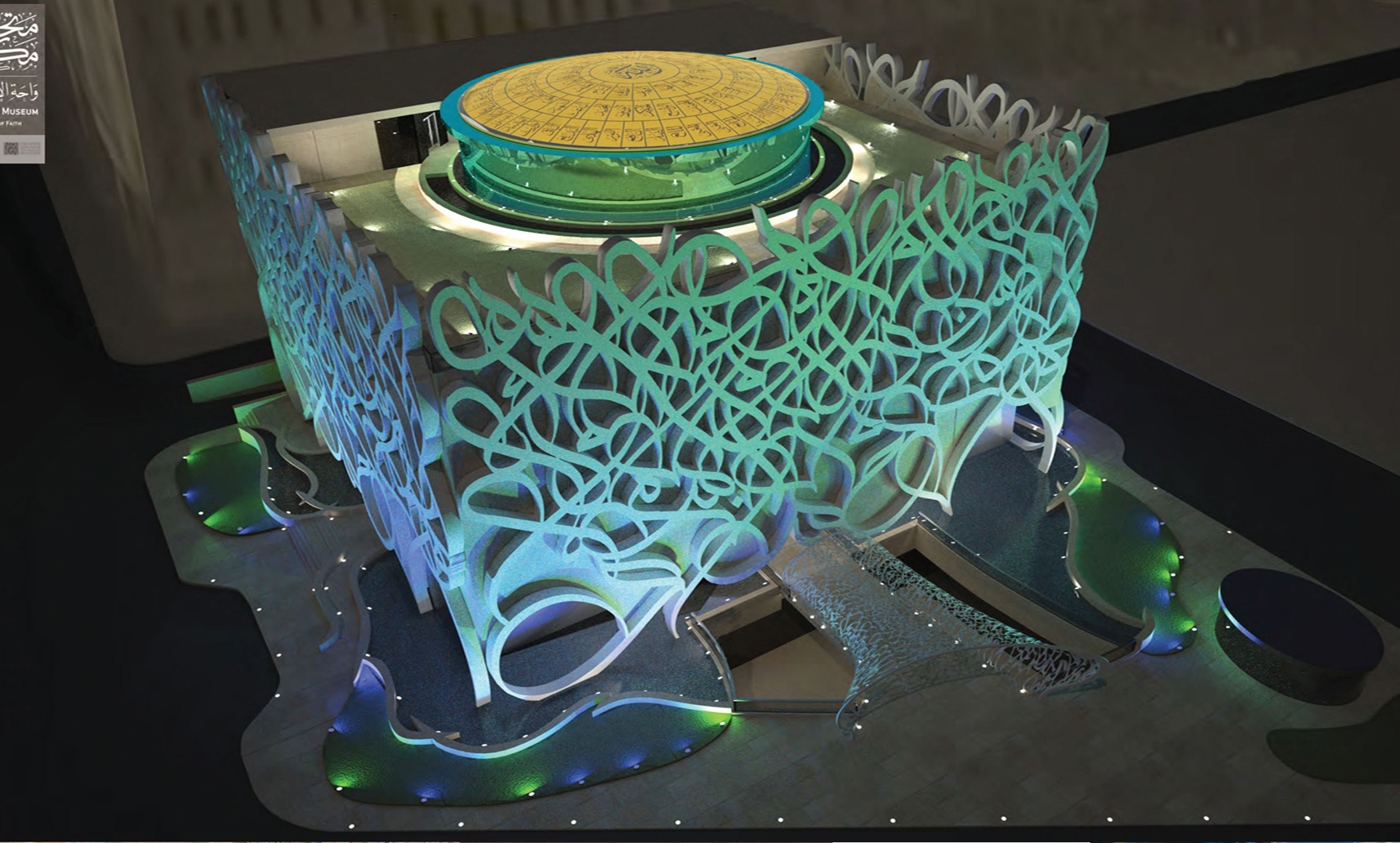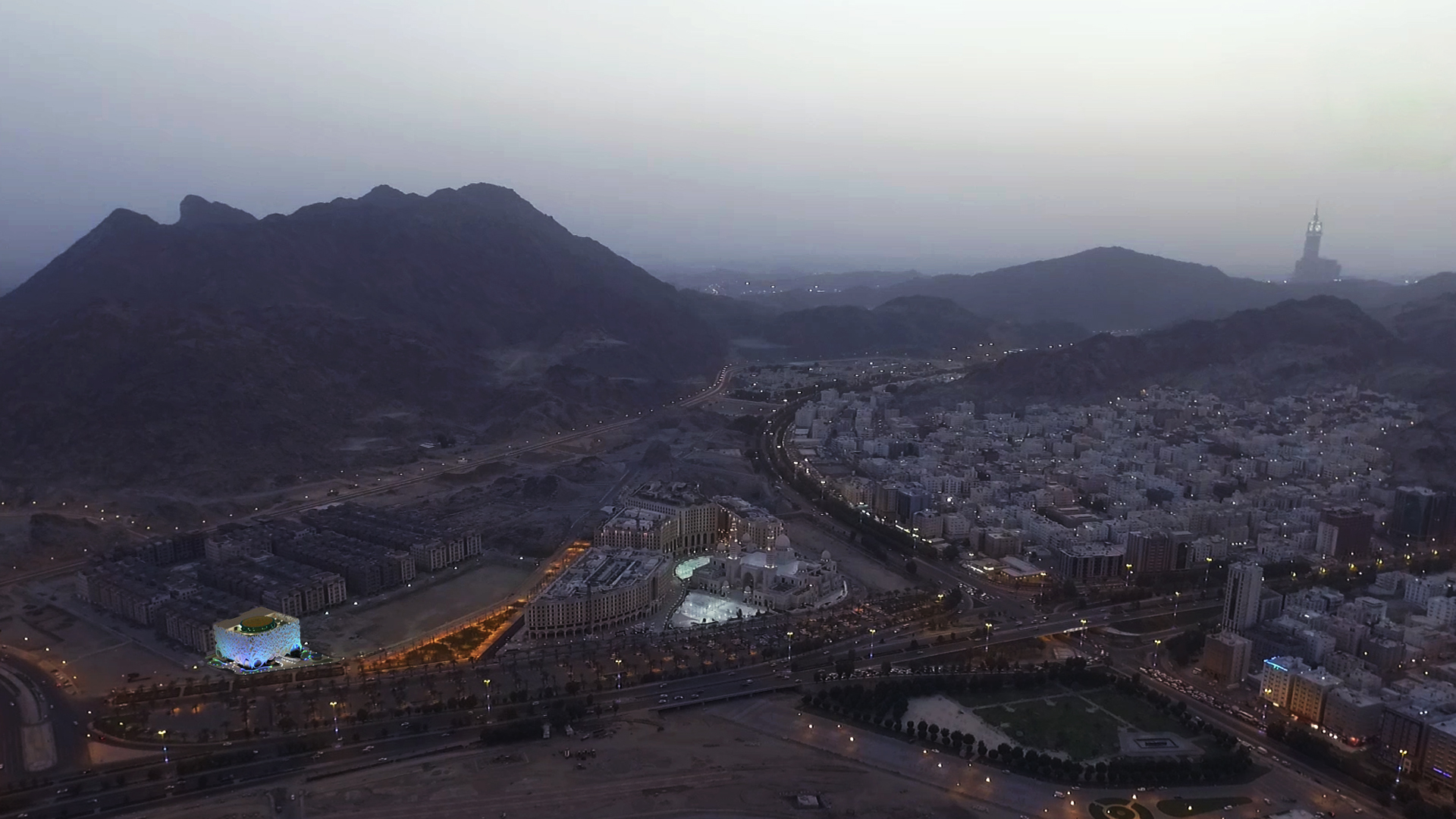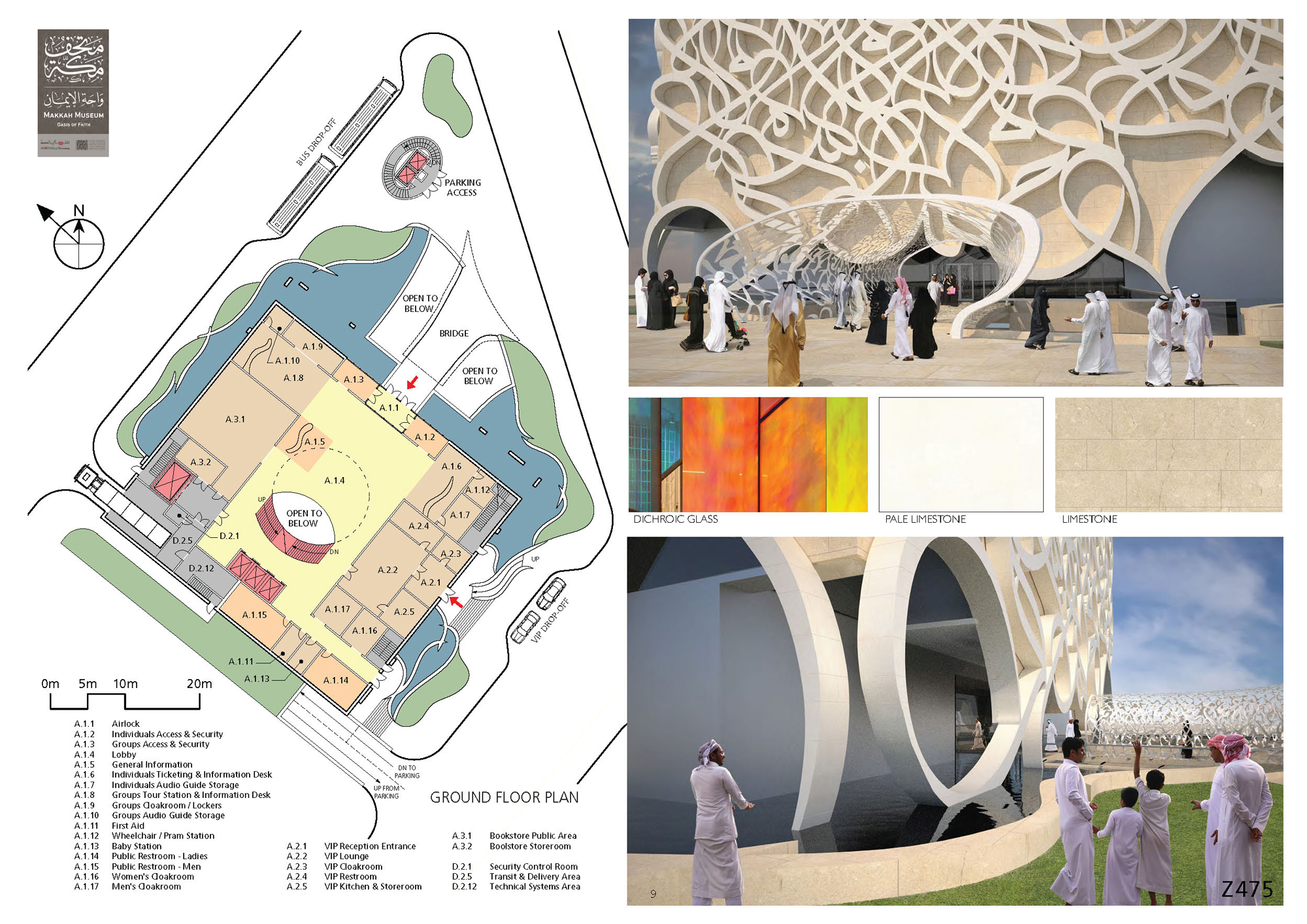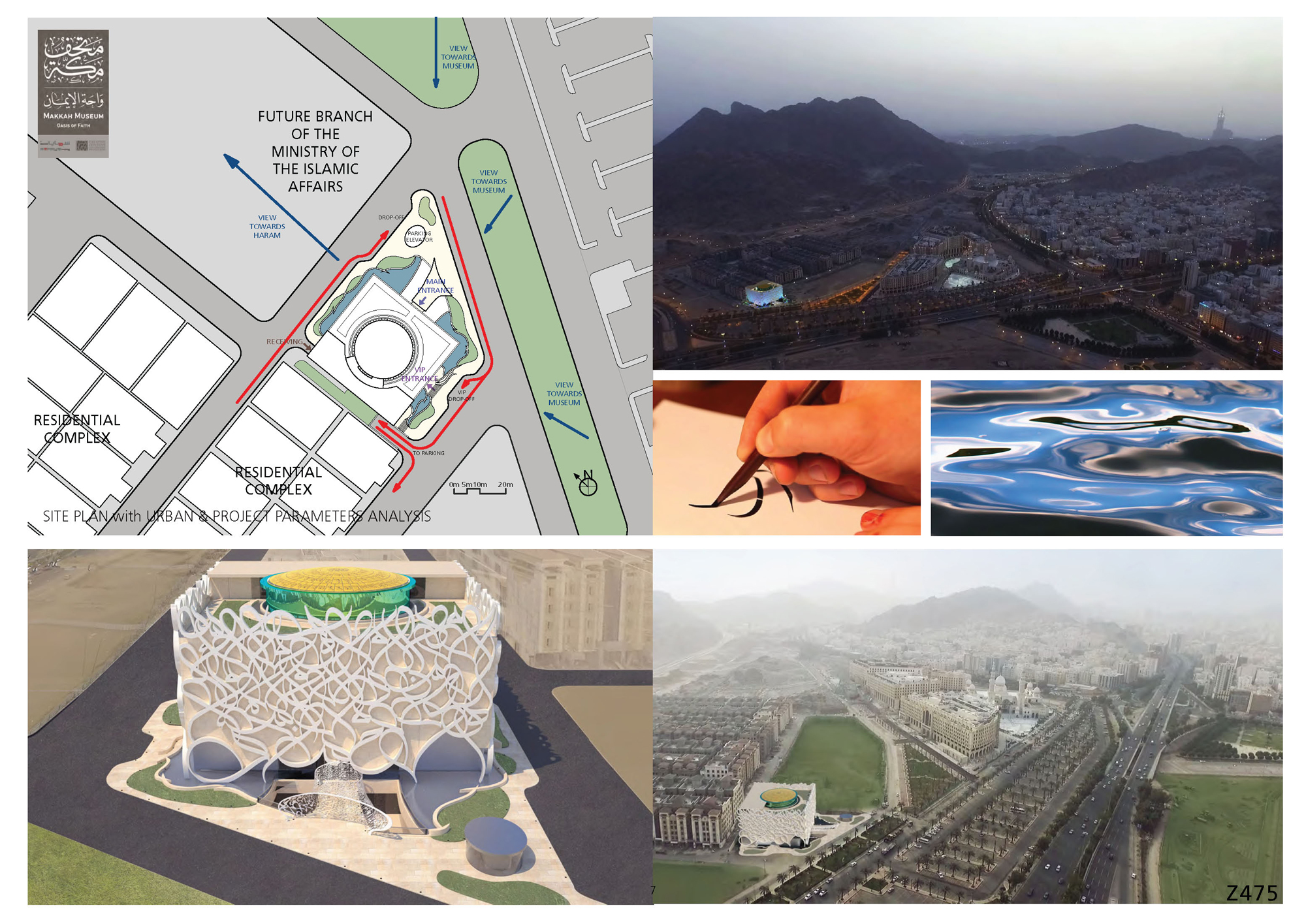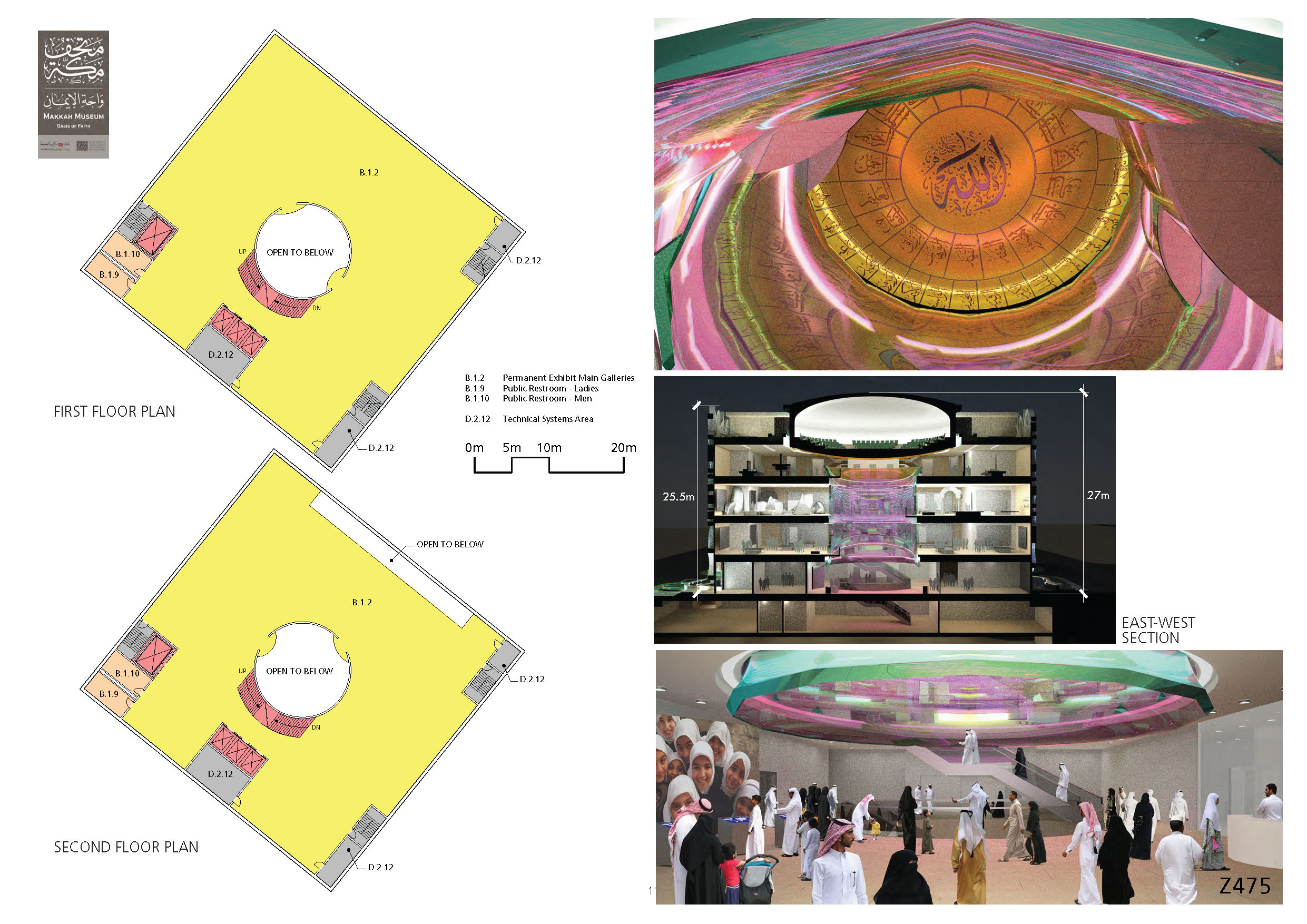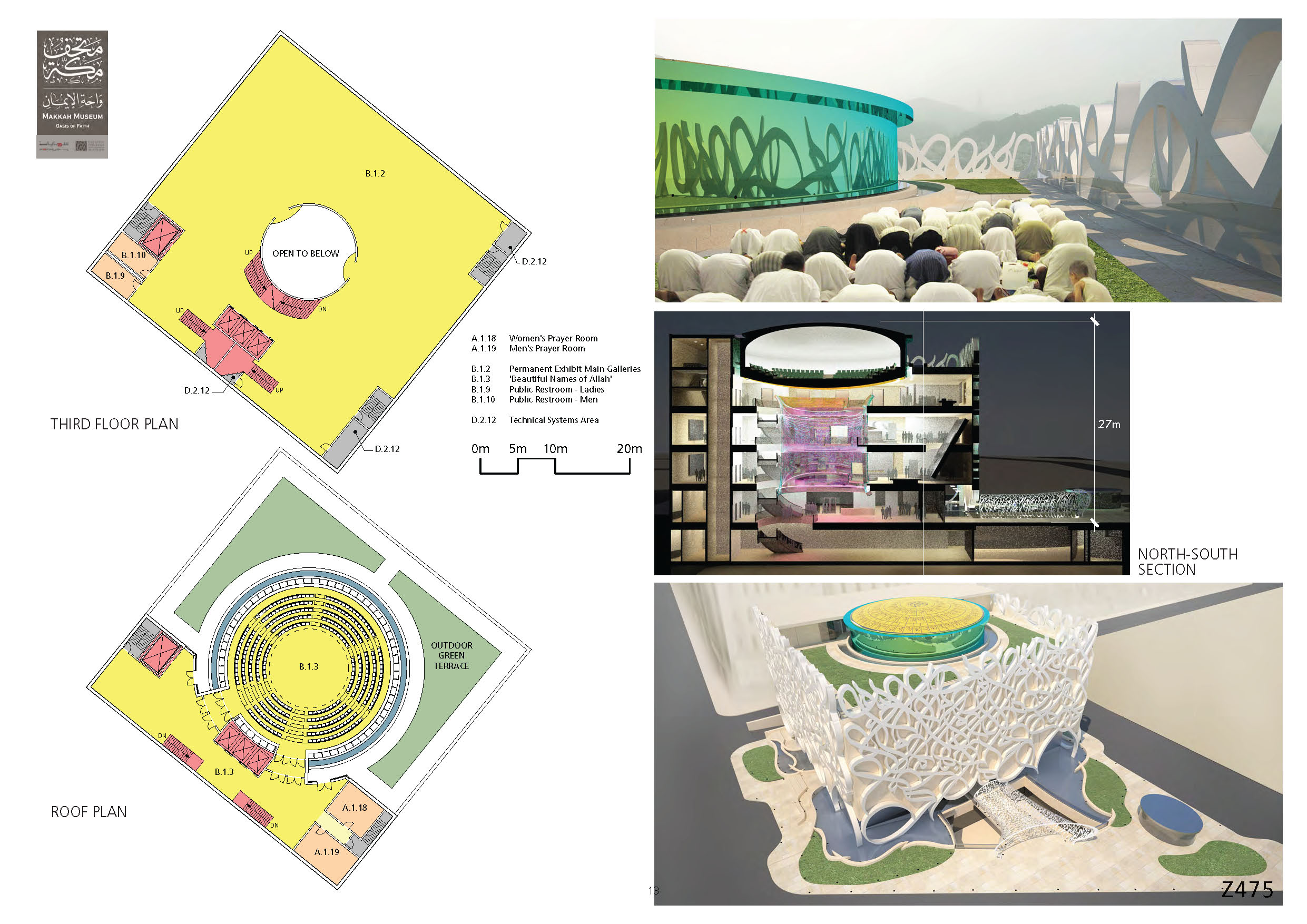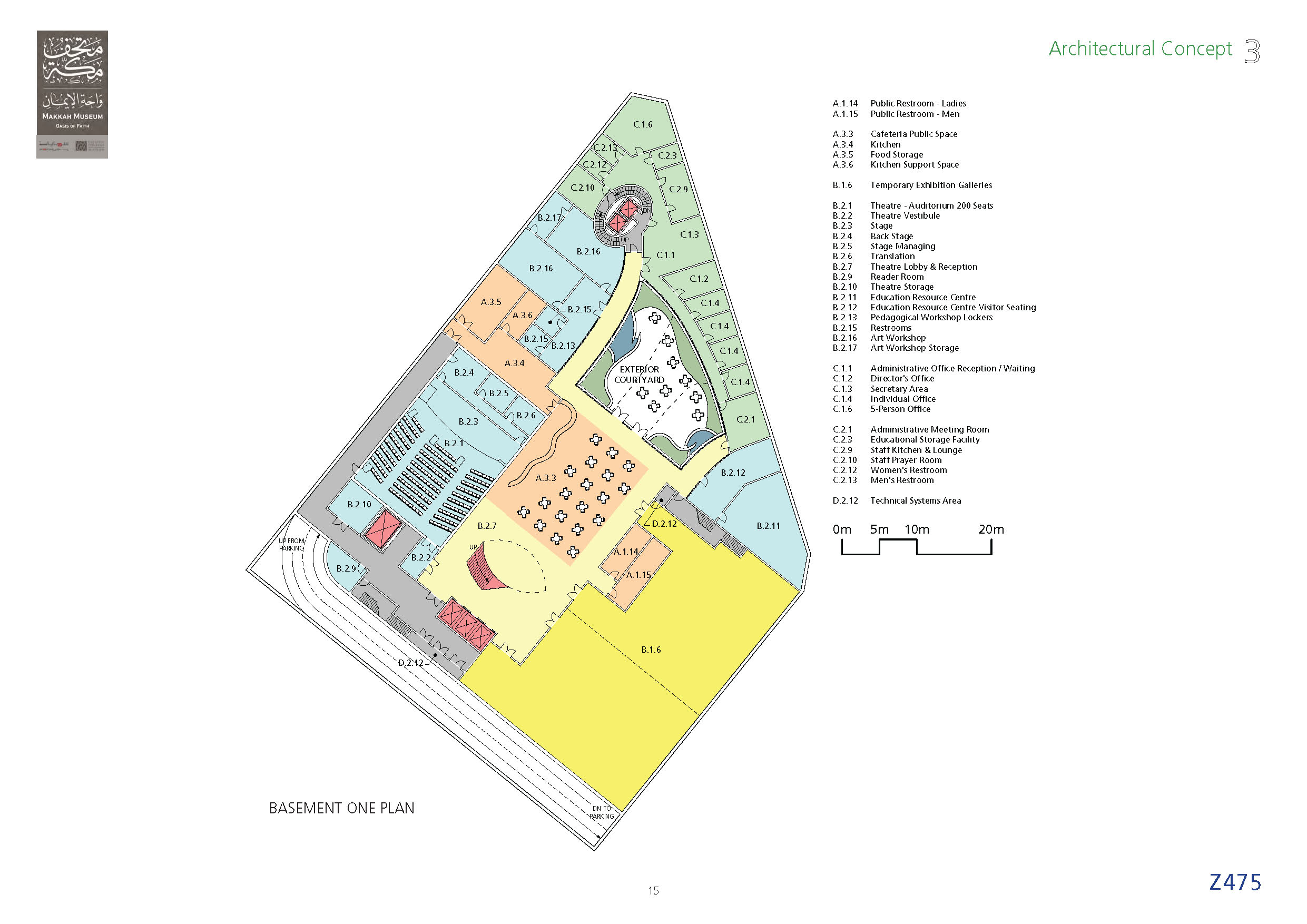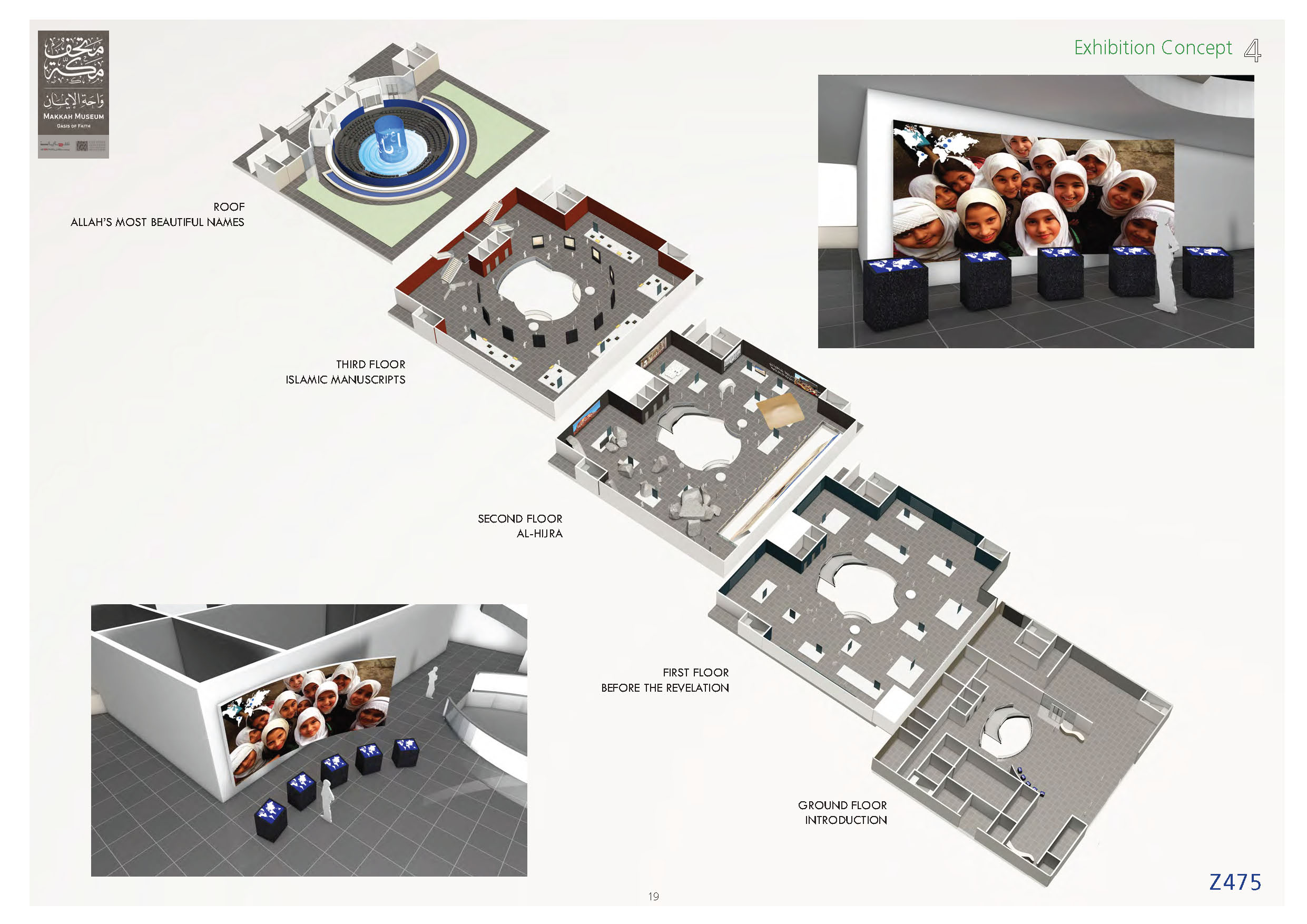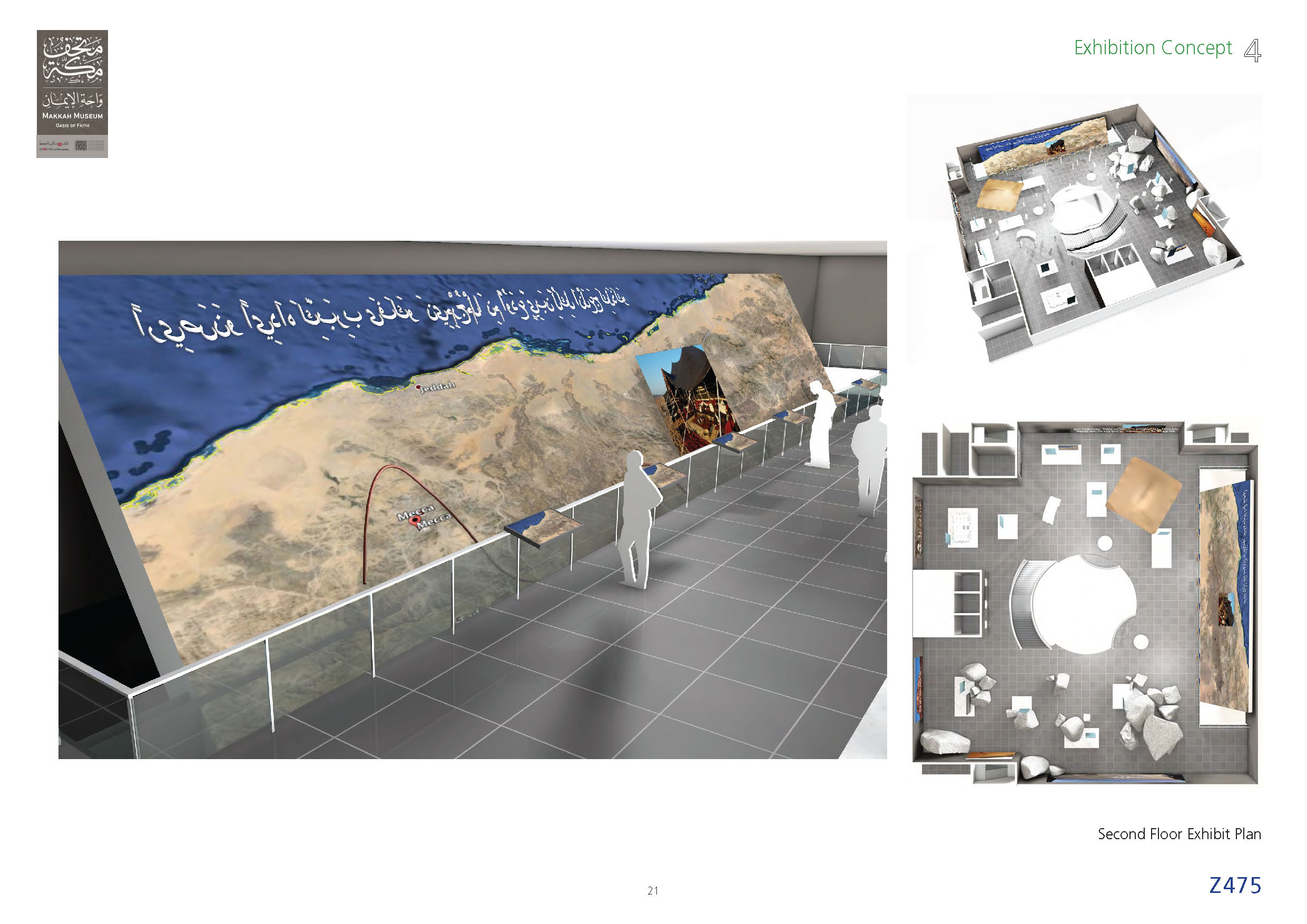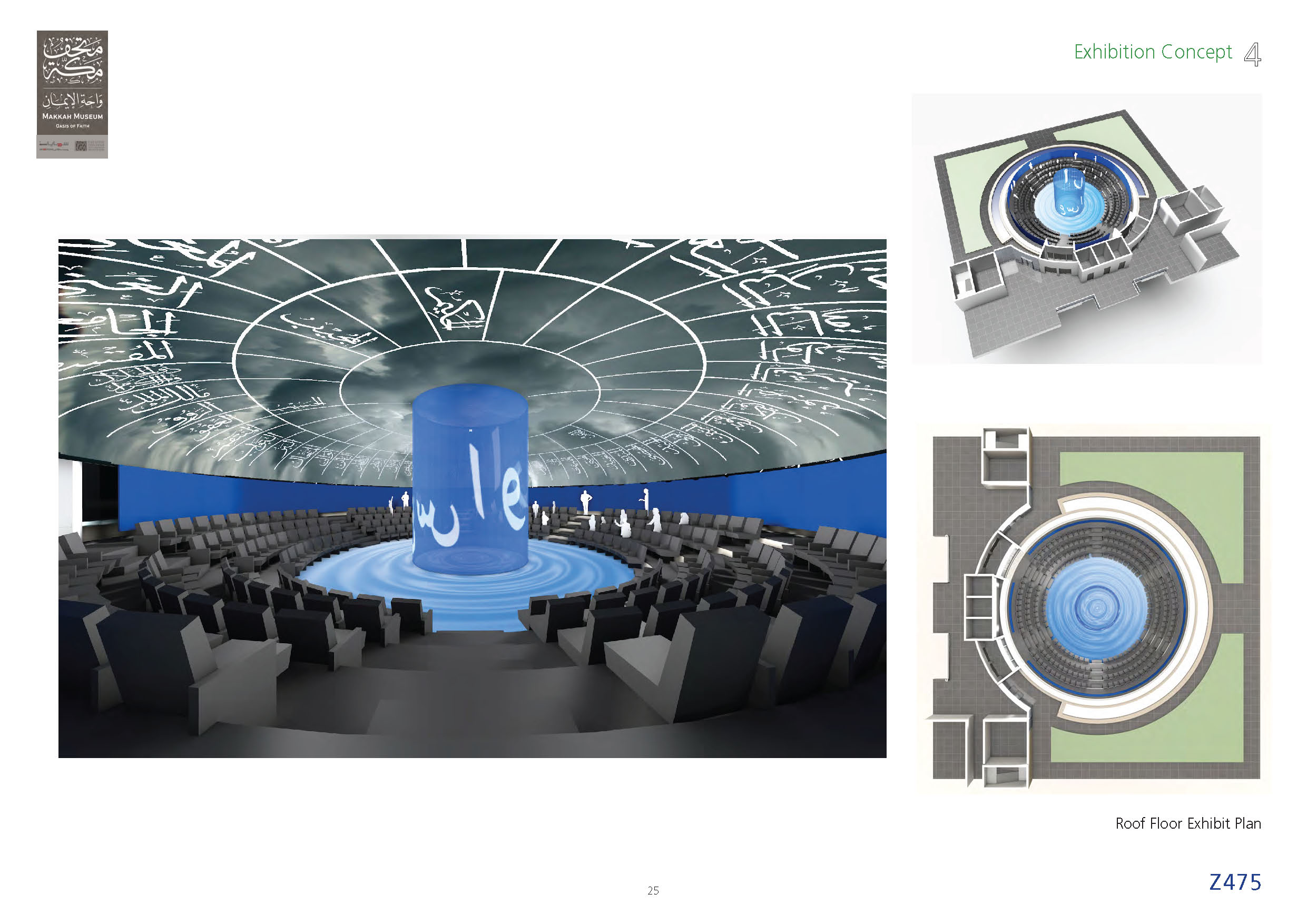Makkah Museum
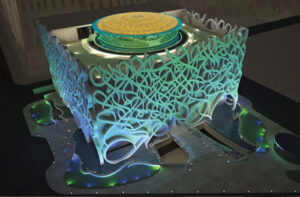
Location: Makkah, Saudi Arabia
Role: Museum Designer for International Competition (one of seven finalists); Lead team of specialist museum consultants (West Office Exhibition Design, Northern Light Productions, eL Seed, WSP and Al Mansouryah Co.)
Program: History galleries, collection storage, auditorium, library, lobby, cafe, gift shop, function spaces, classrooms, exhibit support, and offices
Building Area: 145,000 sf (plus 55,000 sf underground parking area)
Status: Client awarded project to another finalist in 2016
Description:
Sacred Destination
All over the world and five times a day, Muslims pause to face Makkah and pray to Allah. More than a billion Muslims direct their prayers to the Kaaba, the center of the sacred al-Masjid al-Haram, and affirm the unity of their faith. No matter where you are or what language you speak, for Muslims there is one God, one direction, and one people.
From wherever you go out [for prayer, O Mohammed] turn your face toward al-Masjid al-Haram, and indeed, it is the truth from you Lord. (Qur’an 2:149)
In the design of this museum, we celebrate the unity symbolized by the Hajj, the congregation of Muslims from all over the world, and the achievement of the pilgrims who have arrived in Makkah. After a lifetime of praying in the direction of the Kaaba, visitors to the Makkah Museum will be in the middle of a transformational journey, fulfilling the fifth pillar of their faith.
As a meeting place for visitors, this museum will provide opportunities for Muslims to exchange information about how Islam is practiced in their home countries and will bestow a sense of membership in a global Islamic community. As a sanctuary for the names of Allah, this museum will inspire prayer and reverence for Islam through the architecture of the building as well as the exhibit displays and media. As an Oasis of the Faith, this museum will be a center of teaching about the Islamic faith.
Ultimately, this museum will provide context for the pilgrimage that visitors are undertaking and make connections, both spiritual and historical, between their journey and the life of the Prophet (pbuh). The intent, as expressed in the design, is to deepen the meaning of their stay in Makkah and to offer teachings that visitors will take home to their families, friends, and communities.
The architectural design expression is intended to blend traditional Islamic forms and styles with modern state-of-the-art technology and materials. The visitor’s impression will be of a museum that is thoroughly modern and world-class, but rooted in a rich tradition and history. It will be evident to people passing by that this museum is a special place of civic stature, appropriate to its internal goals, mission and vision.
We have carefully placed all of the public exhibition and associated visitor amenities in a simple cubic form that is set back from the main boulevard to form a generous entrance plaza. Below the plaza level, we have placed all of the public and private support areas that serve the museum, along with the required underground parking. This cubic form is reminiscent of the Kaaba, but has its own unique design expression appropriate to a museum of the Islamic Faith.
Calligraphy
The Prophet Mohammed (pbuh) said that to Allah belong the most beautiful names. But also to Allah, and to members of the Islamic community, belongs a beautiful language.
The calligraphic tradition in Islam creates an abiding connection between the Arabic script and religious artistic expression. To Muslims all over the world, the majority of whom do not speak Arabic, the Arabic script is a symbol of their faith.
The facades of the Makkah Museum are literally generated from an artistic rendition of the Qua’anic verse that most closely symbolizes the central message of the Museum. Our team worked with a prominent artist, eL Seed, on this calligraphic design, which is of verse 8 from Surat Ta-Ha.
Allah – there is no deity except Him. To Him belong the best names. (Qur’an 20:8)
Our intent is to have the three most visible exterior walls of the museum engage with the deep Islamic calligraphic tradition and also to show how this expression of the Islamic faith continues to evolve to the present day through calligraphic art. Calligraphy is used in a unique and powerful way, not simply as decoration or ornamentation, but scaled up and extended to fill the entire exterior walls of the museum. This message is built in three-dimensional calligraphy strokes using two types of local limestone (white and tan shades). In some places such as the entrance arcade and rooftop walls, these strokes are free-standing elements. In other places, they are imbedded within the exterior walls. Visitors will be intrigued to learn the meaning of the exterior wall design. It will be appreciated first for its sculptural qualities and then will take on a special importance when its meaning is discovered.
Inside the museum, visitors will have the opportunity to write passages from the Qur’an in Arabic, to view displays of Qur’anic manuscripts from different eras, and to learn how the Arabic language was codified in the years after the death of the Prophet (pbuh) to preserve his message. When visitors reach the theater display of Allah’s Most Beautiful Names, they will have a greater appreciation for the beauty of the Arabic script and its connection to their faith.
Water
Water is also a key theme in the building and site design. The museum is intended to be an Oasis of Faith. An oasis is a place of meeting and rejuvenation. From the exterior, the museum appears to be resting in a pool of water. A series of reflecting pools at the building perimeter provide a beautiful interplay between the curving stone forms and the landscape elements. Water has a deep symbolic importance in Islam, a religion that was born out of a desert environment. The Prophet (pbuh) tells us that Allah made humans from water (Qur’an 25:54). On the Hajj, pilgrims drink from the waters of Zamzam, a well miraculously revealed to Hagar as she sought water for her infant son, Ishmael.

